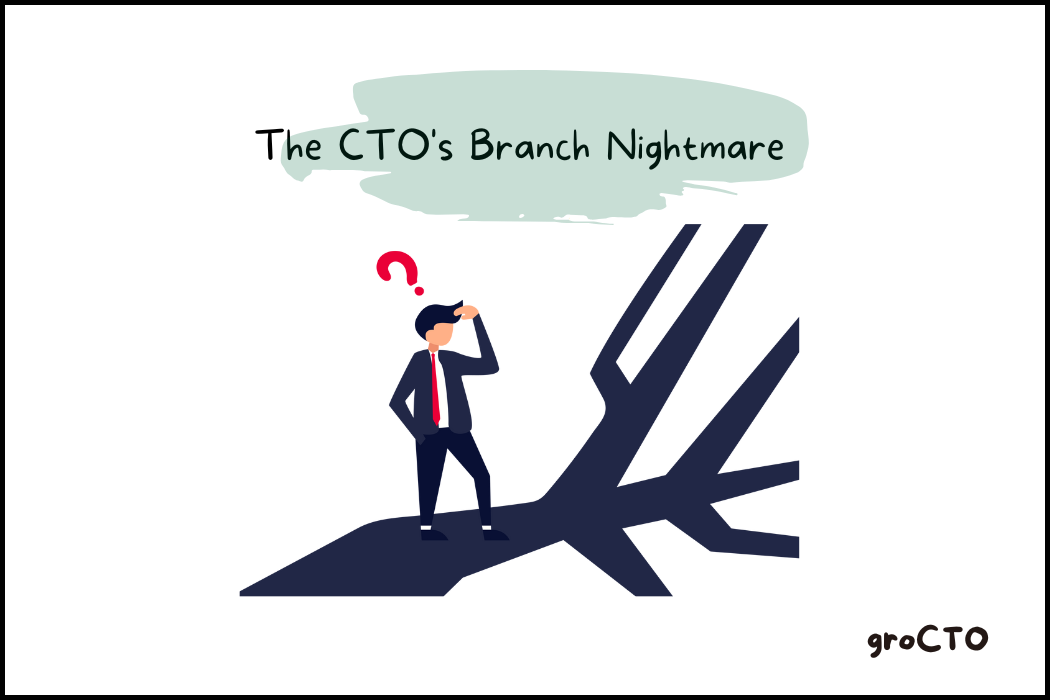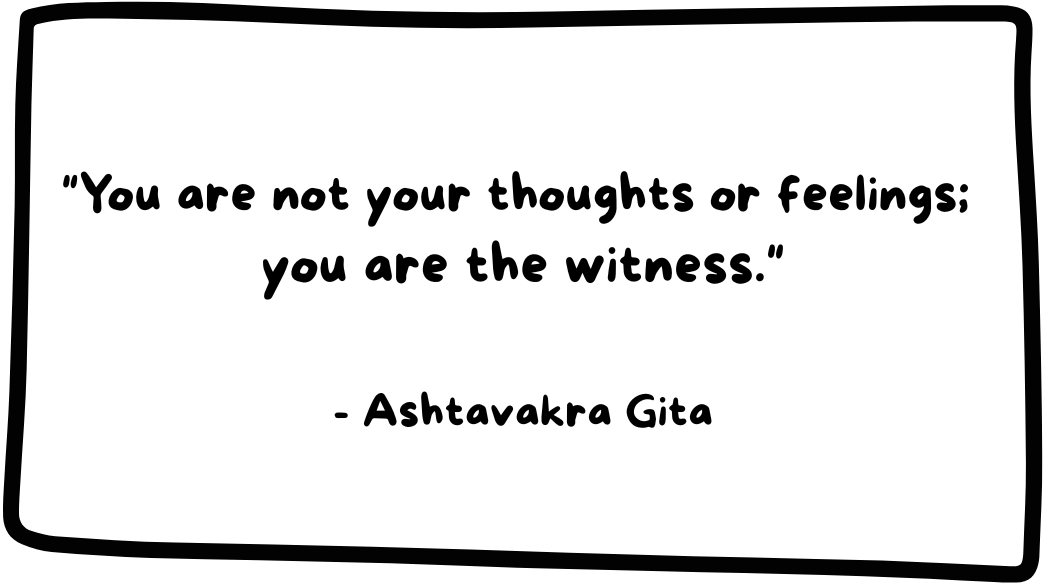You Know What To Do; CTO's Branching Nightmare; AI Meets Flow Coding; Easy-to-fix Issues Managing Seniors
Issue #63 Bytes
🌱 Dive into Learning-Rich Sundays with groCTO ⤵️
You Know What To Do
When it comes to the toughest decisions, you probably already know the right answer!
It's easy to get caught up in endless data analysis and strategy meetings to avoid making a difficult choice. But the author argues that delaying these hard calls—from firing an underperforming exec to selling a failing business—often leads to more pain and wasted time. The key is to lean into discomfort and trust your gut.
Learn why "just" is a warning sign, how to get valuable feedback from the people closest to the problem, and why being overly data-driven can slow you down. This article will challenge you to stop seeking certainty and start acting with conviction.
Read the full article to discover why your team will respect your decisiveness far more than your hesitation.
Article of the Week ⭐
“After the CEO hangs up, Marcus slumps back. "We're not a technology company anymore. We're a branch management company that occasionally ships software by accident.“
The CTO's Branch Nightmare
Etienne de Bruin tells the story of Marcus, a CTO with 120 engineers drowning in feature branches. Their “branch board” looked like a subway map gone wrong with dozens of parallel lines, features marked done but blocked for weeks, and weekly integration parties that consumed calendars.
$9.6M a year in wasted engineering time, or the equivalent of 48 engineers doing nothing but resolving merge hell.
Etienne pushed Marcus to confront the truth: feature branches were the source of the chaos. Other companies had long ago abandoned them for trunk-based development. Skeptical but desperate, Marcus agreed to pilot the shift with one team.
Pilot (Weeks 1–4)
Feature flags: every change hidden behind flags (with budget approved).
Fast tests: suite cut from 45 minutes to 8.
Pairing over PRs: engineers coached to do real-time review.
Three rules: nothing lives outside main >24h, builds must stay green, commits must be small and deployable.
By week two, the payment team was deploying hourly. Merge conflicts dropped to zero. Lead time fell from 3 weeks to 4 hours. Happiness scores jumped. Within a month, the pilot team shipped long-blocked features and even absorbed work from other groups.
Scaling Up
It was chaos initially, but success spread virally:
Month 1: 1 pilot team (8 engineers)
Month 2: 3 teams
Month 3: 7 teams
Month 4: full org (120 engineers)
Supporting infrastructure followed parallelized CI, feature flag dashboards everywhere, automated rollback, Sentry for real-time monitoring. Culture shifted too: pairing skeptics with converts, celebrating deploys per day instead of branches merged.
Six months later, Marcus hadn’t heard the word merge conflict in months. Deployment frequency went from 2 per week to 30 per day. Integration overhead dropped by 35%; the equivalent of hiring dozens of engineers without adding headcount.
Start with one frustrated team, arm them with feature flags and pairing, enforce daily commits, and measure everything. The results speak louder than any argument.
Other highlights 👇
It's time for AI to meet Flow
AI pilots are everywhere. Teams bolt on LLMs, automate steps, and ship features faster than ever. Yet the business impact often feels flat. Why? Is effort scattered? Does anyone understand how the work flows?
Steve Pereira introduces the idea of the AI Flow Engineer. A role focused on making the work itself flow better. Not more output, not more dashboards, but transparency on where the real constraints live and discipline in removing them.
The role in practice:
Map the flow. Visualize how work moves across teams, tools, and approvals, surfacing hidden blockers.
Align stakeholders. Get teams talking about outcomes, not just tasks.
Prototype fixes fast. Use AI (LLMs, automation platforms, lightweight code) to relieve real bottlenecks within days, not quarters.
Hand off & repeat. Once validated, improvements get scaled while the engineer moves to the next constraint.
Having someone who combines facilitation, systems thinking, and hands-on building creates opportunities to relieve silos, able to bridge gaps where ops, IT, or consultants often fall short.
Impact, when it works:
30–80% shorter lead times by cutting handoffs and rework.
AI investments that actually return 10x ROI, because they target constraints not shiny demos.
A shared language of flow across departments.
Teams that feel lighter, faster, and more aligned.
The bigger lesson: we don’t win by scaling effort anymore, we win by scaling intelligence. Whether you call it Flow Engineering or AI Flow, the future of tech orgs depends less on piling on more tools and more on making the system of work itself smoother.
Food for thought: If nobody on your team “owns flow,” you’re probably leaking value at every handoff.
Common problems managing senior engineers
Suresh has managed more than 30 engineers, and the ones that take the most coaching aren’t juniors. They’re seniors. Experienced, capable, and independent but also prone to blind spots that slow the team if left unchecked. He breaks it down into four archetypes and shares how to coach each:
1. The Over-Engineer
They dream up elegant systems when a simple solution would do. They’re motivated by complexity.
Anchor them to customer value: “What’s the simplest thing that works?”
Use decision records and pros/cons lists.
Set artificial constraints (time, cost, scope) to guide focus.
2. The Builder-First
They rush into coding before design. Documentation and planning feel like afterthoughts.
Normalize incomplete designs, iteration is fine.
Show why design helps with effort estimates, feasibility, and onboarding.
Encourage pattern matching from past projects.
3. The Ambiguity-Freezer
They stall when problems are vague, hoping clarity will magically arrive.
Coach them to define clarity by asking better questions.
Treat “non-answers” as signals of boundaries and expectations.
Flip the problem: ask what would guarantee failure, then avoid it.
4. The Soloist
They’d rather finish things themselves than delegate, fearing slowdowns.
Teach parallelization: break work so others can run with chunks.
Highlight leverage: what new, higher-value work they could do if they delegated.
Encourage trust-building through pairing and regular 1:1s.
The very strengths that make seniors valuable can also cause these blind spots. Over-engineers push for scale, soloists prize speed, builder-first types care about accuracy, ambiguity-freezers want clarity. Coaching, not micromanagement, is what turns these traits into team-level assets.
Find Yourself 🌻
That’s it for Today!
Whether you’re innovating on new projects, staying ahead of tech trends, or taking a strategic pause to recharge, may your day be as impactful and inspiring as your leadership.
See you next week(end), Ciao 👋
Credits 🙏
Curators - Diligently curated by our community members Denis & Kovid
Featured Authors -
, ,Sponsors - This newsletter is sponsored by Typo AI - Ship reliable software faster.
1) Subscribe — If you aren’t already, consider becoming a groCTO subscriber.
2) Share — Spread the word amongst fellow Engineering Leaders and CTOs! Your referral empowers & builds our groCTO community.





Thank you for the shoutout!!